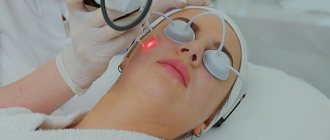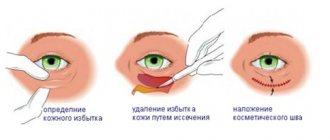On April 17, the Moscow Clinical Center for Infectious Diseases was opened in the Voronovsky settlement. The capital’s authorities managed to implement this large-scale (about 80 thousand square meters) and ambitious project from scratch in almost a month.
The new clinic was built using prefabricated structures. But this is not just a temporary hospital to combat the coronavirus pandemic. This is a capital clinic that will serve the city for decades. When the epidemic ends, a modern and well-equipped infectious diseases hospital will operate in Voronovsky.
The Moscow Clinical Center for Infectious Diseases "Voronovskoe" is an autonomous hospital with an infectious disease profile , where all types of medical care are provided. It became part of the city clinical hospital named after V.P. Demikhova.
The new hospital is gradually increasing its capacity. Today, over 200 patients with coronavirus infection are being treated here, and about two dozen people are admitted per day.
Chief physician of the city clinical hospital named after V.P. Demikhova Sergey Perekhodov told mos.ru how the clinic is organized, how a new team is being formed and what the future holds for the medical institution after the end of the pandemic.
Information from IP Voronov Sergey Nikolaevich: address, telephone, fax, email, website, work schedule
Voronov Sergey Nikolaevich
Region: Lyubertsy municipal district, urban settlement of Lyubertsy Lyubertsy municipal district
Address: Lyubertsy municipal district, urban settlement of Lyubertsy Lyubertsy municipal district
Telephone: +7 (980) 2306662 +7 (980) 2306662
Fax machine: +7 (952) 5246565 +7 (952) 5246565
E-Mail: n/a
Website: n/a
Working hours: Mon-Fri: 9-18, Sat-Sun: 11-17 Mon-Fri: 9-18, Sat-Sun: 11-17
Found an inaccuracy in the description or want to provide more information about IP “Voronov Sergey Nikolaevich”? Write to us!
Detailed information about individual entrepreneur Sergey Nikolaevich Voronov, Lyubertsy municipal district, urban settlement of Lyubertsy, Lyuberetsky municipal district: accounting, balance sheet. Download bank details, tenders, credit history, taxes Voronov Sergey Nikolaevich. Download everything in one zip archive
Details of individual entrepreneur Voronov Sergey Nikolaevich: OGRNIP, INN, OKPO, OKATO (data from the Unified State Register of Individual Entrepreneurs)
Type of entrepreneur: Individual entrepreneur
OGRNIP: 309502709700049
Taxpayer Identification Number: 502712246234
OKPO: 0159948975
OKFS: 16 - Private property
OKOGU: 4210015 – Individual entrepreneurs
OKOPF: 50102 – Individual entrepreneurs
OKATO: n/a
OKTMO: 46631101 - Lyubertsy municipal district, urban settlement of Lyubertsy Lyubertsy municipal district
Registration authority: Interdistrict Inspectorate of the Federal Tax Service No. 17 for the Moscow Region
Date of entry into the register: 07.04.2009
GRN record of changes: n/a
Sales volume for the year: less than 190 million rubles. less than 190 million rubles.
Credit rating: standard standard
Permanent staff: more than 10 people more than 10 people
Registration of individual entrepreneur Sergey Nikolaevich Voronov with the Pension Fund of Russia and the Social Insurance Fund
Data on registration of individual entrepreneur Sergey Nikolaevich Voronov in the Pension Fund of Russia and the Social Insurance Fund
Registration number in the Pension Fund: 162443522363
Date of: 07.04.2009
Registration number in the FSS: 983130298787728
Date of: 07.04.2009
IP Voronov Sergey Nikolaevich ceased his activities n/a. An individual entrepreneur ceased his activities due to his adoption of a corresponding decision
Get an extract from the Unified State Register of Individual Entrepreneurs Voronov Sergey Nikolaevich
Additional activities of individual entrepreneur Voronov Sergey Nikolaevich
26.66. Production of other products from concrete, gypsum and cement 28.4. Forging, pressing, stamping and profiling, manufacturing of products using powder metallurgy 28.51. Processing of metals and coating of metals 28.7. Production of other finished metal products 51.70. Other wholesale trade 52.12. Other retail trade in non-specialized stores 52.61.2. Retail trade carried out directly through television, radio, telephone and the Internet 63.12. Storage and warehousing 63.40. Organization of cargo transportation
Everything for the treatment of severe pathologies
How many patients are admitted to the center on average daily?
On average, we receive 20 people. Currently, the center only treats patients with COVID-19 and pneumonia.
As of June 4, 213 beds were filled. So far, the number of patients with COVID-19 and pneumonia remains at the same level. In just over a month we treated almost a thousand people.
How long does it take to treat a coronavirus patient?
The duration of treatment depends on the severity of the condition. The center receives patients of severe and moderate severity; mild patients are not treated here.
Initially, the very structure of the center and the presence of a large intensive care service implies the treatment of severe patients. On average, about 20 people are admitted per day, and the severity of the condition, of course, is determined by the duration of the disease. About 40 percent of patients are in serious condition under treatment. Some are on artificial ventilation.
What habits and previous diseases cause special complications for the body during coronavirus infection?
In fact, any concomitant severe diseases, especially for elderly patients, are aggravated by the virus. This is exactly the main problem.
According to our observations, recently there has been a tendency to increase the number of cases among the young population. It is difficult to say what causes this. It may be the beginning of self-medication, it may be an untimely visit to the doctor, but we have such a tendency that young people become quite seriously ill with severe viral pneumonia.
How many patients are currently being discharged per day?
We have about 15 patients discharged per day. A person infected with coronavirus can take up to two weeks to recover, but the rehabilitation period itself can last for several weeks.
I would like to add that at the center we have all the capabilities - both medications and various treatment methods - in order to quickly treat such a rather severe pathology.
Does the clinical center interact with other medical institutions in Moscow?
Firstly, all departments of the Moscow Government and the city Health Department help us.
We are quite actively in contact with other institutions. Interaction between hospitals, between medical institutions that deal specifically with the treatment of COVID-19, takes place almost around the clock. Any promising positive methods that are used in the treatment of coronavirus are also used in our country.
Doctors have a serious and modern medical facility at their disposal. How do you see the future of the infectious diseases hospital after the end of the pandemic?
The hospital will continue to be used directly for its intended purpose - to treat patients with various infectious diseases, for example respiratory or intestinal. I am sure that it will work for many decades and function quite successfully. All the prerequisites for this exist.
Job Voronov Sergey Nikolaevich: vacancies. career, internship. training, practice
There are currently no open positions found. You can look at similar vacancies in other companies
- Credit specialist (from RUB 31,000) Education: secondary
Work experience: no experienceEmployment: full time
Work schedule: flexible schedule
- Catering accountant (RUB 24,000)
Higher educationWork experience: 1-3 years
Employment: n/a
Work schedule: full time
- SEO Specialist Assistant (from RUB 15,000)
Education: n/aWork experience: up to 1 year
Employment: full time
Work schedule: full time
- Warehouse Manager. (from 23,000 to 30,000 rub.)
Education: secondary vocationalWork experience: 1-3 years
Employment: full time
Work schedule: full time
- Remote assistant (from 15,000 to 30,000 rub.)
Education: n/aWork experience: n/a
Employment: part-time
Work schedule: remote work
- Head of Security Service (from RUB 40,000)
Higher educationWork experience: 1-3 years
Employment: full time
Work schedule: full time
- Office manager (from 20,000 to 25,000 rubles) Education: n/a
Work experience: no experienceEmployment: full time
Work schedule: full time
- Mechanical assembly mechanic (from 20,000 to 40,000 rubles)
Education: secondaryWork experience: 1-3 years
Employment: temporary work / freelance
Work schedule: full time
- Cooks (negotiable)
Education: n/aWork experience: n/a
Employment: n/a
Working hours: n/a
- Senior salesperson (from RUB 26,000 to RUB 37,000)
Education: n/aWork experience: 1-3 years
Employment: full time
Work schedule: shift schedule
- Sales consultant (negotiable)
Education: secondary vocationalWork experience: 3-5 years
Employment: full time
Work schedule: full time
- Sales Manager at Google Agency (from 20,000 to 50,000 rubles)
Education: n/aWork experience: n/a
Employment: full time
Work schedule: remote work
View all vacancies
“I love the fighting spirit of our staff.”
Sergey Nikolaevich, how is the clinical center for infectious diseases organized and what are its main features?
Our medical center covers an area of more than 40 hectares and has a capacity of 800 beds . Of these, slightly less than half are intensive care beds. In addition to four intensive care units, the center has seven infectious diseases departments. Each has 80 beds, in other words, we have 560 beds for treating infectious patients. Wards in infectious diseases departments are designed for two to three people.
The entire territory of the center is conditionally divided into two zones: “clean” and “dirty”. In the “clean” area there are warehouses, supply units and dormitories with more than a thousand beds - both for medical personnel and for technical workers and security.
What are the benefits of having hostels? After hard work, our specialists have the opportunity not to go home, but to relax here.
The center has organized a completely new logistics for providing medical care to infectious patients. By the way, the design was carried out by domestic specialists, but taking into account foreign experience.
A distinctive feature is the treatment of infectious patients in isolation to prevent nosocomial infection. An ambulance brings the patient to the emergency department, he is placed in a special box, where an examination is carried out and a medical history is drawn up. And after assessing his general condition, he is transported to the medical building on our ambulance transport.
How are things going with the technical equipment? Are there enough ventilators for such a large bed capacity?
The center has a powerful diagnostic base: two computed tomographs and a magnetic resonance imaging scanner. They are located in the diagnostic block near the intensive care units. This is convenient: if necessary, patients are brought in both from intensive care units through separate entrances and from infectious diseases departments.
I would like to separately note: we have a large number of artificial lung ventilation devices - more than 200. By and large, each intensive care bed is equipped with a ventilator, as well as modern monitoring equipment. In addition, the center uses various methods of extra-organ detoxification - in particular, the method of extracorporeal membrane oxygenation. So far it has not been used, there have been no indications, but we are ready to use this method.
In addition, the center has created a large laboratory department with a capacity of up to 10 thousand tests per day. When fully deployed, more than three thousand PCR tests will be able to be performed.
We have our own oxygen station, which supplies almost all departments. It must be said that in medical units and medical buildings, oxygen is supplied to each bed and, if necessary, it is possible to deploy an intensive care bed.
How difficult was it to organize work in such a huge center and in such a short time?
Of course, it’s difficult because the center is new. My deputies and I came here when the buildings were still being built. And in a short period of time - almost a month - the center was erected. More than 10 thousand people worked here around the clock.
There were difficulties at the initial stage. We had to plan our actions in still unfinished buildings, when the equipment had not yet been arranged. When everything is in place, like in any hospital, there is equipment, specialists, you just come and do the treatment. There was nothing here. Therefore, absolutely everything, from recruiting personnel, obtaining medical equipment, its arrangement and setup, not to mention construction and commissioning work, was done quite quickly, in unison with the builders.
I would like to say a few words of gratitude to the builders: in a short period of time they erected such a grandiose structure, which, I hope, will work for decades. Some people sometimes get the impression that the center is disposable and was built only for the treatment of coronavirus infection. But this is not so: the principle of construction of this center is suitable for the treatment of infectious pathologies of various diseases.
How does the working day of the head physician of such a large clinic work?
I get up quite early - every day at five in the morning and leave for work at six. Somewhere around seven o'clock I am already at my workplace, and all my deputies are also already there at this time. I receive reports from the duty shift. And around eight to half past nine, normal life begins: I receive deputies in economics and accounting. Then, when there are operations, I operate, but this is once or twice a week.
Almost the entire working day is devoted to organizing the treatment process in the hospital. In the last month, all my time has been spent organizing work at the Moscow Clinical Center for Infectious Diseases.
How long does a doctor’s shift at the center last?
All doctors and medical staff work different shifts, each with their own schedule: 24/12 hours, 24/24 hours.
How many people are already working on the hospital staff?
Currently, more than 600 people are already employed. It is planned that when the center reaches full capacity, more than a thousand people will work here.
The people in the center are all new, not everyone knows each other yet. Nevertheless, I like the fighting spirit of our medical and support staff. I am pleased to see from the outside when a person strives for something and wants to do good. This is always a pleasure for management.
All employees are recruited from different places. Therefore, training to operate modern medical equipment is our priority. This is especially true for the intensive care service, where there are modern ventilators and monitors. We train specialists almost daily. For this purpose, the hospital operates a simulation center.
How does your center ensure the safety of doctors and nurses?
The protection of medical personnel is a priority in our work. We have a sufficient amount of personal protective equipment for both employees and maintenance personnel.
The center is designed in such a way that all employees enter the treatment area only through a sanitary checkpoint and in no way through other entrances. Getting from the residential area to the sanitary checkpoint, they change clothes, take a shower, undergo sanitary treatment and put on special clothes of a certain color. After this, the center’s employees enter the territory, each to their own treatment unit.
There is a control room on the territory - one might say, the heart of this center, where information about the vital activity of all departments and divisions flows. There is a control unit for a unique ventilation system, which allows almost all contaminated air to be evacuated through special airlocks and subsequently disinfected.






